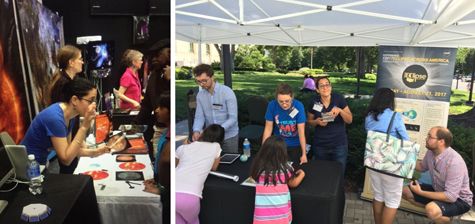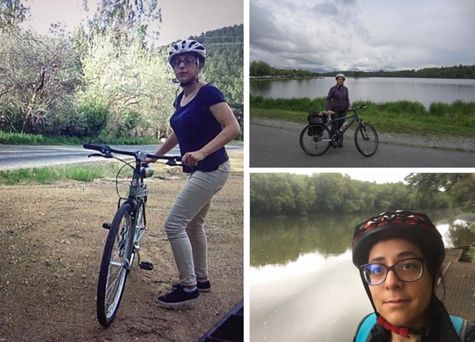Early Career Scientist Spotlight
Dr. Meriem Alaoui Abdallaoui
Solar Physicist
Solar Physics Laboratory
What science questions do you investigate?
My main scientific interests are related to problems of solar and heliospheric physics, from an observational and theoretical point of view, especially using X-ray data and kinetic models. Before obtaining a master’s degree in space plasma physics from the University of Orleans, I worked on various aspects of heliospheric plasmas from collisions on the rarefied Martian atmosphere, to emission near the Earth’s bow shock, to the solar atmosphere. For my Ph.D., I have worked on problems related to the heating of the solar corona, especially through highly energetic electrons accelerated during solar flares. The goal is to understand particle acceleration through identifying propagation mechanisms of particles from their primary acceleration site to where their effects are most easily observed in the lower and denser layers of the solar atmosphere or in situ in the interplanetary space. I use mostly data from the preeminent X-ray imager and spectrometer RHESSI (Ramaty High Energy Solar Spectroscopic Imager) and develop models to explain the observations in terms of propagation and heating.
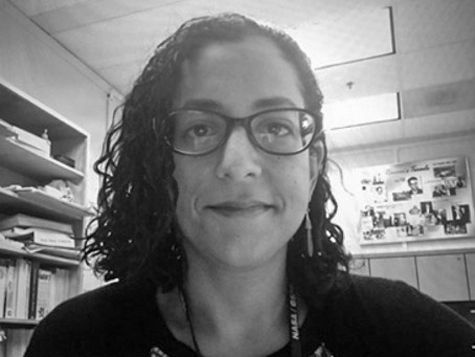
Credit: Meriem Alaoui Abdallaoui
What motivated you to pursue a career in Solar Physics?
It was mostly a fortunate accident. I was inspired by my mentors and professors whose passion was infectious. They were gifted storytellers as well. Dr. Joe Khan was one of the first people to take me under his wing. He spent a lot of time patiently teaching me to analyze different data sets and explaining the physics of shock waves, solar flares, etc.
My initial major as an undergraduate was in robotics. However, I knew I wanted to study fundamental physics. I decided it would be easier to catch up on robotics classes, perhaps mistakenly, rather than on physics classes, so I switched to a Physics major on my second year. I never switched back. The physics program offered more freedom to tailor our own curriculum. This freedom is an aspect of research that I like.
As a teenager, my father would take me to used bookstores and let me go through the messy piles while he ran errands. You would have to crouch to go from one pile to another. I remember there was a third floor with more advanced scientific magazines, which I was not able to understand at the time. They had a junior version, where they reported on new scientific advances and occasionally tackled debunking pseudoscience. It’s all the little things that lead you to develop interests in one field over another.
Credit: Jordan Guerra
Right: Outreach event I organized for the total solar eclipse of 2017 as a collaboration between NASA, the National Academies of Sciences Koshland Museum, and the Catholic University of America. Many friends from the three institutions volunteered their time and expertise, we even had two ASL interpreters who turned out to be an asset.
Credit: Duilla de Mello
What is one research project that you are particularly excited about, and why?
I love the fact that I get to work on both theory and observations. I also love the fact that I have to adopt ideas from different disciplines and bring them into solar physics. I have had great help with this aspect recently. You get to learn a little bit about different disciplines. For example, the phenomenon I currently study is how when an electron beam propagates in the solar atmosphere, it generates a return current which serves to neutralize the plasma. The electric field induced as a consequence, accelerates a fraction of the ambient electrons in which the original beam propagates. These are suprathermal electrons called runaways because they are freely accelerated by the electric field. The same phenomenon happens in thunderstorms, planets’ atmospheres, and in tokamak fusion generators. I am particularly passionate about this specific phenomenon because it is an effect that is often ignored and still poorly understood, but it has the potential to help us understand the engine that powers solar flares.
What is one of your favorite moments in your career so far?
The day of my defense, my advisor was visibly proud. After years, this thesis was finally written. At the end, the result was that we could rule out the electron propagation mechanism that I was focused on, return currents, as responsible for the X-ray spectral features we were trying to understand.
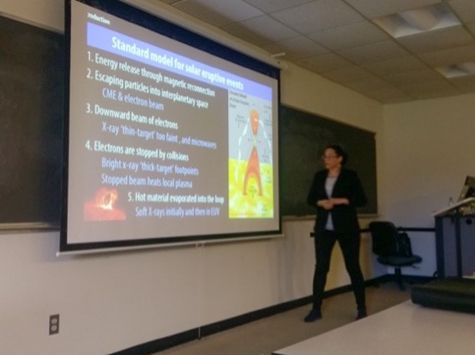
Credit: Trevor Torpin
What do you like to do in your free time?
I like swimming and cycling. One of the hardest things for me at the beginning of the pandemic was not having access to a pool. Both activities are great for long uninterrupted quiet moments. I also enjoy cooking a good meal occasionally.
Credit: Meriem Alaoui Abdallaoui
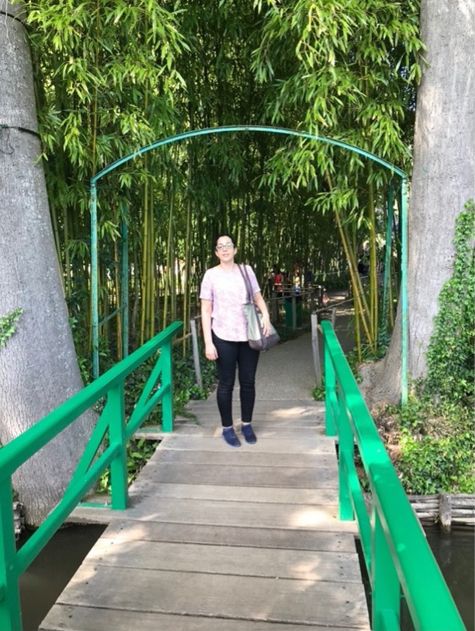
Credit: Meriem Alaoui Abdallaoui
Where do you see yourself in the near future?
Hopefully continuing my research in Solar Physics on beam propagation effects. I would not mind working on other aspects of solar physics which would allow me to gain more insight into fundamental plasma physics. I am currently learning how to use different data sets from a ground-based microwave telescope for example. This data allows us to infer information about a higher energy population of electrons than that observed in X-rays. Finally, and this is more of a long-term goal, I would love to be a part of the team to build the next-generation solar flare dedicated x-ray and gamma-ray instrument. This is the most direct way of gaining insight into the acceleration of particles and the onset of solar eruptive events. The next opportunity for flying one such instrument is on the next 11-year solar cycle. We have barely a decade to get this done.
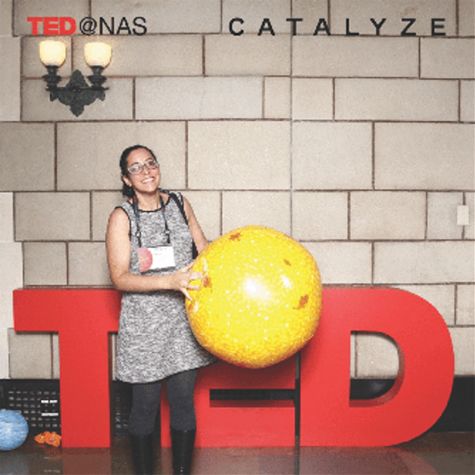
Credit: Meriem Alaoui Abdallaoui
Biography
Home Town:
Rabat, Morocco
Undergraduate Degree:
B.S. in Physics, University of Orleans, France
Post-graduate Degrees:
M.S. in Space Plasma Physics, Catholic University of America, Washington, DC
Ph.D. in Physics, Catholic University of America, Washington, DC
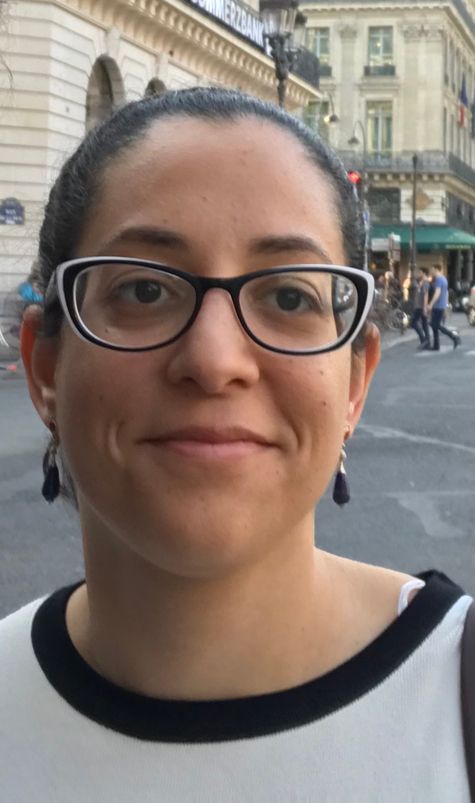
Link to Dr. Alaoui Abdallaoui's GSFC Bio

